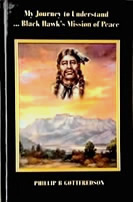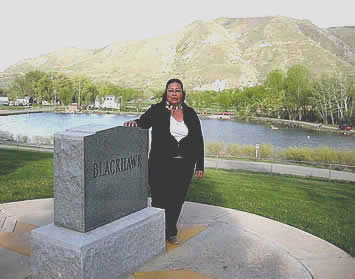
Black Hawk Memorial Spring Lake, Utah
Mary Murdock Meyer Chief Executive of the Timpanogos Nation
Descendent of Timpanogos Chief Arapeen
Timpanogos Nation Biography & The Utah Black Hawk War
The Timpanogos Nation was first encountered by Spanish explorers Juan Rivera in 1765 who was in search of the "bearded ones" and later by Dominguez and Escalante in 1776. They describe having come in contact with "the bearded ones," E'utahs, who spoke the language of the Snake-Shoshone and called themselves "Timpanogostzis," who lived on the shores of a lake (Utah Lake) the Timpanogostzis named Timpanogos. Dominguez and Escalante named the valley "El Valle de Nuestra Señora de la Merced de Los Timpanogos" (translation: The valley of our Lady of Mercy of the Timpanogos) due to its beautiful and serene landscape. The valley (Utah Valley) is surrounded by majestic mountains, dominated by a twelve-thousand-foot mountain that explorers Dominguez and Escalante called "La Sierra Blanca de Los Timpanogos" (translation: "The white mountain of the Timpanogos"). Dominguez and Escalante named Mt. Timpanogos in honor of the Tribe.
Then, the Timpanogos River connected Utah and the Great Salt Lake. Government maps that predate Mormon settlements support these facts. Timpanogos Lake and Timpanogos River are known today as Utah Lake and Provo River. The Lagunas, fish eaters, Yutah, E'utah, and the bearded ones, the Timpangotzis, and Timpanogos, are called by all these names.
"Turunianchi the Great" c1750 was the leader of the Timpanogostzis, and Cuitza-pun-inchi, Pan-chu-cun-quibiran, and Picu-chi were his brothers. In c1785, Turunianchi had a son named Moonch. Moonch, aka Old Uintah, Old Elk, and Big Elk, was the father of Chiefs Sanpitch, Yah-Keera (Walker), Arapeen (father of Jake Arapeen), Tabby, Ammon, Sowiette, Kanosh, and Grospeen, who were known as the "Royal Bloodline." Six of the eight brothers were the uncles of Antonga Black Hawk, who was the son of Sanpitch.
The Timpanogos are indigenous to the Wasatch of Utah. Chief Executive Mary Murdock Meyer of the Snake-Shoshone Timpanogos Nation, who is a direct descendent Chief Arapeen, generously provided definitive proof that the Timpanogos are the living descendants of the 'Royal Bloodline' of Chiefs Sanpitch, Wakara, Arapeen, Tabby,
Ammon, Sowiette, Grospeen and Antongua 'Black Hawk', and other acclaimed leaders in the Utah Black Hawk War such as Kanosh, and Tintic. Their lineage is documented by birth and marriage records, death certificates, Indian Agency records, treaties, and that the Timpanogos have filed some thirteen thousand pages of historical records with the United States Department of the Interior going back to 1765.
NOTE: The Timpanogos is a centuries-old band of the Snake-Shoshone. They are not a Band of the Ute Tribe and never were. The Timpanogos today live on the Uinta Valley Reservation in Utah and are distinctly different in origin, ancestral bloodlines, language, and customs. The Utes are not Shoshone and are not related to the Timpanogos.
Please visit the Official Timpanogos Website for more information.
The Utes are from Colorado and were never enrolled members of the Timpanogos Nation. The Timpanogos ruled the entire Wasatch when Mormon settlers and colonists arrived in Utah in 1847. For a detailed account of the origins of both tribes, please read The Timpanogos Nation Is Snake-Shoshone.
Today the Ute Tribe claims that Black Hawk is their ancestor and that he was not Timpanogos but Ute. According to the 1885 Indian Census Roll of the Uintah Ute of the Uintah Valley Reservation, the only Black Hawk born into the Mountain family of the Uintah Ute Tribe was born in 1851.
The Utes Black Hawk couldn't have been at Battle Creek Canyon in 1848 and the Fort Utah massacre in 1850. He could not have led Utes into battle in the Black Hawk War between 1865-1870. The Utes were not in Utah until 1881.
Repatriation Document 1996
NAGPRA [Federal Register: January 31, 1996 (Volume 61, [(Number 21)]
[Notices]
[Page 3459-3460]
From the Federal Register
Online via GPO Access [wais.access.gpo.gov] clearly states "Timpanogots' Chief Black
Hawk."
Now that we have a better understanding of who the Timpanogos are, let's explore the Black Hawk War.
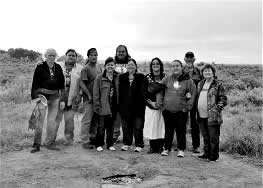
Phillip B Gottfredson and members of the Timpanogos Nation
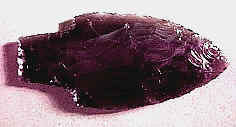
Spear Point gifted to Phillip Gottfredson was napped by Stewart Murdock elder member of the Timpanogos Nation
The Chief Executive of the Timpanogos Nation speaks about Utah Lake (Mary Murdock Meyer) Video
The Utah Black Hawk War
Note: It can be confusing when there are multiple references to Chiefs in these accounts. Understanding that "Chief" is Whiteman's term is important. In Native tradition, individuals were called "Chiefs" depending on the circumstances, hereditory or the community selected leaders based on the situation at hand. Timpanogos Tribe had several Chiefs over time all who belonged to the royal family.
In this context, we will use the term "Chief" for consistency and established terminology. When referring to the leader of the Timpanogos Nation, we will use the word "Principal Chief." When discussing leaders who led warriors in battle, we will use the term "War Chief." During the years of the Black Hawk War (1847-1898), the Timpanogos Nation had three Principal Chiefs: Moonch aka Old Elk, Sanpitch, Wakara, Arapeen, and Tabby. Other leaders, Kanosh and Antonga Black Hawk held a subordinate position to the Principal Chief. Arapeen's son Jake and Sanpitche's son Antonga Black Hawk specifically served as War Chiefs.
Just 70 years following the Dominguez and Escalante expedition, trouble began for the Royal Bloods of the Timpanogos Nation. On July 24, 1847, LDS leader Brigham Young and a party of 143 Mormons emerged from the mouth of Cottonwood Canyon onto a hill overlooking the northern end of Timpanogos Lake (now Salt Lake Valley). A thousand-mile journey from Nauvoo, Illinois, took a hundred and eleven days by horseback and covered wagons. Seeing the valley, Brigham said, "It's enough. This is the right place. Drive on."
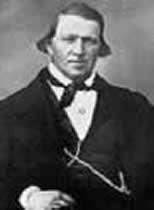 Following the assassination of LDS Church founder Joseph Smith at Carthage, Illinois in 1844, and with ever-increasing hostilities, Mormons departed from Illinois. Beginning in 1847, they migrated westward to the Wasatch Mountains of the Great Basin in Utah Territory, where they could peacefully practice polygamy and other religious beliefs. Led by Brigham Young, who boasted of having 50 wives, they poured into the ancestral land of the Timpanogos Nation at some three thousand a month, upsetting the natural order of all living things for the Indigenous Tribes living there. They killed deer, elk, and buffalo and depleted the fish population in the Timpanogos River(Provo River) and Timpanogos Lake(Utah Lake). They polluted water sources that Tribes solely depended upon for food, medicines, and life-sustaining necessities. With the rapid increase in Mormon population, agricultural development, and barbwire, the Timpanogos soon ran out of territory for sanctuary.
Following the assassination of LDS Church founder Joseph Smith at Carthage, Illinois in 1844, and with ever-increasing hostilities, Mormons departed from Illinois. Beginning in 1847, they migrated westward to the Wasatch Mountains of the Great Basin in Utah Territory, where they could peacefully practice polygamy and other religious beliefs. Led by Brigham Young, who boasted of having 50 wives, they poured into the ancestral land of the Timpanogos Nation at some three thousand a month, upsetting the natural order of all living things for the Indigenous Tribes living there. They killed deer, elk, and buffalo and depleted the fish population in the Timpanogos River(Provo River) and Timpanogos Lake(Utah Lake). They polluted water sources that Tribes solely depended upon for food, medicines, and life-sustaining necessities. With the rapid increase in Mormon population, agricultural development, and barbwire, the Timpanogos soon ran out of territory for sanctuary.
The Mormon war with the Timpanogos Nation was not a single incident. Twenty years of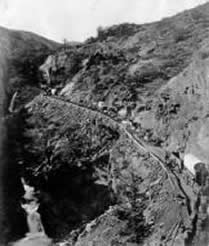 groundbreaking research, Phillip B Gottfredson documents over a hundred and fifty bloody confrontations between the Timpanogos Nation and the Mormons during 1849 - 1872. And forty-one of those confrontations occurred before the year 1865. Peter Gottfredson said the War began in 1865. According to Mormon historians, the War started for the Mormons in 1865. However, as Phillip pointed out on the Homepage of this website, the Timpanogos of today had not forgotten the previous 25 years when Mormon colonists brutally massacred their ancestors at Battle Creek Canyon, Fort Utah, Circleville, Grass Valley, and Bear River. Or when their beloved Leader Wakara, or "Chief Walker" as the Mormons call him, was murdered in 1855.
groundbreaking research, Phillip B Gottfredson documents over a hundred and fifty bloody confrontations between the Timpanogos Nation and the Mormons during 1849 - 1872. And forty-one of those confrontations occurred before the year 1865. Peter Gottfredson said the War began in 1865. According to Mormon historians, the War started for the Mormons in 1865. However, as Phillip pointed out on the Homepage of this website, the Timpanogos of today had not forgotten the previous 25 years when Mormon colonists brutally massacred their ancestors at Battle Creek Canyon, Fort Utah, Circleville, Grass Valley, and Bear River. Or when their beloved Leader Wakara, or "Chief Walker" as the Mormons call him, was murdered in 1855.
Historians for the Church of Jesus Christ of Latter-Day Saints say the years leading up to the War were "complex circumstances." A knowing member of the Timpanogos Tribe put it succinctly when asked if the causes of the War were complex, "What choice were we given? To walk knee-deep in the blood of our people, or give up our sacred land and culture and accept white man's ways... it was a matter of what's right... our honor... survival...is that so complicated to understand? What's hard to understand is why a people said they believe in the teachings of Jesus would do such a thing."
Timpanogos Chief Wakara Warns Brigham Young
When Brigham Young and his followers arrived in the Uintah Basin in 1847, Principal Chief Wakara of the Timpanogos warned Brigham Young that he and his people were not welcome to settle on the land of their ancestors. Brigham assured Wakara they were only passing through to California and needed to spend the winter to rest and continue their journey in the spring. The following is a brief synopsis of the events as they unfolded.
Wakara's compassion for the Mormons who had made a difficult journey helped Brigham and his followers survive the first winter of '47 with food and provisions. Wakara's brothers Tabby, Sanpitch, Sowette, Arapeen, Grospeen, Ammon, Kanosh, and others made every effort to avoid bloodshed.
When spring came in 1848, it was apparent that Brigham Young had no intention of leaving as he had promised Wakara and commenced building cabins, barns, and fencing off the land. Wakara's patience was wearing thin, again warning Young to leave and not build any fort (Fort Utah) on their land near Timpanogos Lake. Soon hundreds more Mormons had arrived.
Battle Creek Canyon and Fort Utah
As tensions continued to escalate, on February 28, 1849, Brigham Young falsely accused a small group of 'Indians' of stealing his horses which led to the senseless killing of a peaceful group of Timpanogos at Pleasant Grove armed with only a rifle and had not fired a single shot. This encounter is known as the Battle Creek Canyon Massacre. A year later February 9, 1850, a second massacre occurred at Fort Utah when Mormon militia brutally murdered seventy Timpanogos, and the severed heads of fifty Tribal leaders and members were hung by their long hair from eves of buildings and stacked in boxes. Wakara was outraged and heartbroken. His people were in danger and fearful of these strange intruders, who could not be trusted and had no respect for his people or the natural order. Wakara's older brother Sowette argued against the violence that would bring more harm. Though Sowette had no power over Wakara, he was the elder. It is the traditional Native way to respect the elders for their wisdom and counsel.
Extermination Special Order #1
If things couldn't get any worse, just before the massacre at Fort Utah, Mormon apostle George A. Smith, a cousin to Church founder Joseph Smith, declared the Timpanogos "have no right to their land." The LDS Church had no legal power to remove Indigenous peoples from their aboriginal land and was in violation of the terms of the Treaty of Guadalupe Hidalgo of 1848. George ordered the all-Mormon legislature to "extinguish all titles" and get them out of the way and onto reservations because they were "heathens" and "savages." Leaders of the LDS Church had set the stage for the extermination of the Timpanogos Nation, known as "Special Order No. 1."
Special Order
No. 2
It followed that on January 31, 1850, Lieutenant General Daniel H. Wells of the all Mormon Nauvoo Legion sent orders to Captain George D. Grant to "exterminate the Timpanogos," known as "Special Order No. 2". Isaac Higbee was the bishop of Fort Utah and he met with the First Presidency and the Quorum of the Twelve Apostles at the Fort when they agreed that the only way to keep Fort Utah would be to exterminate the Timpanogos. Source: Utah State Archives, State Capitol, Salt Lake City, Utah Territorial Militia Correspondence, 1849-1863, ST-27, Microfilm reel 1, Document No. 5. Eugene E. Campbell. Establishing Zion
“I say go [and] kill them…" said Brigham Young, "Tell Dimmick Huntington to go and kill them—also Barney Ward—let the women and children live if they behave themselves… We have no peace until the men [are] killed off—never treat the Indian as your equal.” Source: BYC, Microfilm reel 80, box 47, folder 6. Farmer, Jared (2008). On Zion’s Mount: Mormons, Indians, and the American Landscape. Harvard University Press.
Doctrine of Discovery | Settler Colonization
The Christian mind-set of superiority began long before Columbus arrived in the Americas, Christian Monarchs during the 15th century had decreed that anyone who did not believe in the God of the Bible, or that Jesus Christ was the true Messiah, was deemed "heathens," "infidels" and "savages". Christians believed that they were entitled to commit all manner of depredations upon them. Indeed America was founded upon Christian principals; by those who drew their power from Old Testament-inspired Doctrine of Discovery, saying: "This is the land promised by the Eternal Father to the Faithful, since we are commanded by God in the Holy Scriptures to take it from them, being idolaters, by reason of their idolatry and sin, to put them all to the knife, leaving no living thing save maidens and children, their cities robbed and sacked, their walls and houses leveled to the earth." - Steven T. Newcomb(video) Indigenous Law Institute and author of "Pagans in the Promised Land."
According to LDS church doctrine (Book of Mormon 2 Nephi 5:21-23) the nature of their dark skin was a curse, the cause was the Lord, the reason was because the Lamanites (Native Americans) "had hardened their hearts against him, (God)" and the punishment was to make them "loathsome" unto God's people who had white skins.
Mormons' Slavery
Slavery was legal in Utah as a result of the Compromise of 1850. Some Mormon pioneers, Brigham Young included, had brought African-American slaves with them when they migrated west. In the Compromise of 1850, Congress formed the Utah Territory and New Mexico Territory, allowing each party to engage in slavery at its own discretion.
In the years 1850-52, the all-Mormon legislature sanctioned slavery of not only Blacks but Indians, stating that a white man need only have possession of an Indian for that Indian to be enslaved, and this included children.
"Mormons used slavery as a tool of redemption." According to Historian Andrés Reséndez' author of "The Other Slavery,"Brigham said, "Buy up the lamanite children, educate them, and teach them the gospel so that many generations would not pass they should become a white and delightsome people. Buy them up to save their souls."
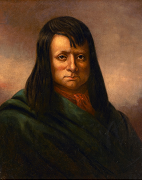 Timpanogos Principal Chief Wakara told interpreter M. S. Martenas In 1853 "He (Wakara) said that he had always been opposed to the whites set[t]ling on Indian lands, particularly that portion which he claims; and on which band resides and on which they have resided since his childhood—that the Mormons when they first commenced the settlement of Salt Lake Valley, was friendly, and promised them many comforts, and lasting friendship—that they continued friendly for a short time, until they became strong in numbers, then their conduct and treatment towards the Indians changed—they were not only treated unkindly, but many were much abused and this course has been pursued up to the present—sometimes they have been treated with much severity—they have been driven by this population from place to place—settlements have been made on all their hunting grounds in the valleys, and the graves of their fathers have been torn up by the whites." - STATEMENT, M. S. MARTENAS, INTERPRETER Great Salt Lake City, July 6 1853 Brigham Young Papers, MS 1234, Box 58, Folder 14 LDS Archives - Will Bagley Transcription. See complete transcription
Timpanogos Principal Chief Wakara told interpreter M. S. Martenas In 1853 "He (Wakara) said that he had always been opposed to the whites set[t]ling on Indian lands, particularly that portion which he claims; and on which band resides and on which they have resided since his childhood—that the Mormons when they first commenced the settlement of Salt Lake Valley, was friendly, and promised them many comforts, and lasting friendship—that they continued friendly for a short time, until they became strong in numbers, then their conduct and treatment towards the Indians changed—they were not only treated unkindly, but many were much abused and this course has been pursued up to the present—sometimes they have been treated with much severity—they have been driven by this population from place to place—settlements have been made on all their hunting grounds in the valleys, and the graves of their fathers have been torn up by the whites." - STATEMENT, M. S. MARTENAS, INTERPRETER Great Salt Lake City, July 6 1853 Brigham Young Papers, MS 1234, Box 58, Folder 14 LDS Archives - Will Bagley Transcription. See complete transcription
On July 18th, 1853, a guard at the fort named Alexander Keele was shot and killed. Wakara and his brother Arapeen, at the height of their frustration, led a group of their warriors in an attack on Fort Payson. Fear and anger turned into hate when one of several attacks coincided throughout the territory. Wakara and Arapeen had orchestrated an all-out war on the invaders. They were determined to drive them off their land.
Putting this into perspective, the Mormon population at this time was approximately fifty thousand, and the Native population may have been about the same.
Yenewood "Jake" Arapeen
The Walker War, as it is called, continued for the next two years when Wakara was poisoned to death by the very people he had helped. He was then laid to rest at Meadow, Utah in 1855.
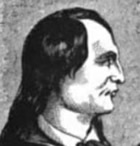 Following Chief Wakara's death, Wakara's leadership was passed to his brother Arapeen. Arapeen was now the Principal Chief of the Timpanogos Nation and faced many ongoing encounters with Mormons and getting on in years by this time, his son Yenewood, known to the Mormons as "Jake," would continue to lead his fellow warriors as War Chief into battle against the invaders.
Following Chief Wakara's death, Wakara's leadership was passed to his brother Arapeen. Arapeen was now the Principal Chief of the Timpanogos Nation and faced many ongoing encounters with Mormons and getting on in years by this time, his son Yenewood, known to the Mormons as "Jake," would continue to lead his fellow warriors as War Chief into battle against the invaders.
Given what was happening to Utah's Native population, many Timpanogos took evasive action and scattered everywhere. Some went to Idaho and Wyoming. Of those who remained in Utah, most were terrified. Under pressure from Mormon colonists, many Timpanogos joined the church.
Col. Johnston and his Army of 2500 U.S. troops were sent to Utah in 1857-1858 to intervene in Brigham's plans. Young's good fortune was that government funds and resources were diverted to the Civil War, leaving Johnston disadvantaged once they arrived. Brigham seized the moment and ordered Johnston's wagons and food be burned. A faithful follower Lot Smith carried out the order, causing 2500 men to suffer extreme hardship during the bitter cold of winter.
Under the orders of Brigham, the Nauvoo militia stole 800 of the 1,400 head of cattle with the Army. While Mormons severely punished famished Timpanogos for stealing even a cow. Mormons not only stole cattle from the United States Government, but they also destroyed the Army's 2720 pounds of ham, 92,700 of bacon, 167,900 of flour, 8910 of coffee, 1400s of sugar, 1333 of soap, 800 sperm candles, 765 of tea, 7781 of hard bread, and 68,832 rations of desiccated vegetables.
Following the murder of Wakara, Chief Tintic was murdered in 1856, 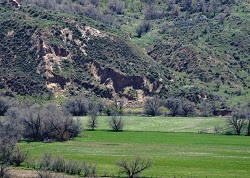 then came the massacre at Bear River that occurred January 29, 1863. Four hundred ninety-three Shoshone were slain by the U.S. Army under the command of Colonel Patrick Edward Connor—among them, old men, ninety women, and children. After the slaughter ended, soldiers went through the Indian village raping women and using axes to bash in the heads of women and children who were already dying of wounds. Chief Bear Hunter and sub-Chief Lehi both were killed. Bear Hunter was the principle Chief of the Lemhi shoshonee which was the band of Sacagawea. The troops burned seventy five Indian lodges, took possession of a thousand bushels of wheat and flour, and one hundred and fifty Shoshone horses. While the troops cared for their wounded and took their dead back to Camp Douglas in Salt Lake City for burial, hundreds of Indians' bodies were left on the field for the wolves and crows for nearly two years. Brigham Young obliged the federal government’s request by supplying Connor with cavalry troops from the Utah Militia. The Lemhi are also known as Snake Shoshone as are the Timpanogos. See Rod Miller's book Massacre at Bear River
then came the massacre at Bear River that occurred January 29, 1863. Four hundred ninety-three Shoshone were slain by the U.S. Army under the command of Colonel Patrick Edward Connor—among them, old men, ninety women, and children. After the slaughter ended, soldiers went through the Indian village raping women and using axes to bash in the heads of women and children who were already dying of wounds. Chief Bear Hunter and sub-Chief Lehi both were killed. Bear Hunter was the principle Chief of the Lemhi shoshonee which was the band of Sacagawea. The troops burned seventy five Indian lodges, took possession of a thousand bushels of wheat and flour, and one hundred and fifty Shoshone horses. While the troops cared for their wounded and took their dead back to Camp Douglas in Salt Lake City for burial, hundreds of Indians' bodies were left on the field for the wolves and crows for nearly two years. Brigham Young obliged the federal government’s request by supplying Connor with cavalry troops from the Utah Militia. The Lemhi are also known as Snake Shoshone as are the Timpanogos. See Rod Miller's book Massacre at Bear River
Chief Tabby
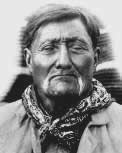 In 1860, the Timpanogos' Principal Chief Arapeen died from the smallpox epidemic that had spread among the Tribe. The Nation's leadership was then passed to his younger brother Tabby who remained in leadership as Principal Chief until his death circa 1898. Meanwhile, the Mormons botched an attempt for peace with the Timpanogos at Manti in April of 1865, when an argument ensued between a drunken John Lowry and Jake Arapeen. Lowry yanked Jake from his horse beating him severely. Jake dishonored before his warriors resigned his leadership as War Chief. Tabby turned to his nephew Black Hawk to be War Chief. See James Leonard Pritchett a great-grandson of Chief Tabby
In 1860, the Timpanogos' Principal Chief Arapeen died from the smallpox epidemic that had spread among the Tribe. The Nation's leadership was then passed to his younger brother Tabby who remained in leadership as Principal Chief until his death circa 1898. Meanwhile, the Mormons botched an attempt for peace with the Timpanogos at Manti in April of 1865, when an argument ensued between a drunken John Lowry and Jake Arapeen. Lowry yanked Jake from his horse beating him severely. Jake dishonored before his warriors resigned his leadership as War Chief. Tabby turned to his nephew Black Hawk to be War Chief. See James Leonard Pritchett a great-grandson of Chief Tabby
Mormon colonizers drastically altered the environment of Utah's Timpanogos: logging and the introduction of domesticated cattle and horses numbered in the thousands. Settlers were farming domesticated crops and cattle meant that Natives could not depend on the natural environment for their food supply. While the Timpanogos were excellent and well-seasoned hunters and gatherers, they required a large land expanse to sustain their communities. The settlers knew this and systematically killed the deer and elk and slaughtered massive numbers of native buffalo. Colonists almost always settled on the most fertile land. They emptied the rivers and streams of fish by over-fishing them with gill nets. The Timpanogos had to travel greater distances, expending more energy, to find food. Ultimately, they had to face the agonizing realization that Mormon colonists were forcing them into surrender.
Changing the conditions upon which the aboriginal people thrived was vital in taking over Native American lands. It meant logging, constructing forts and towns, diverting streams, introducing thousands of domesticated cattle, plowing and fencing critical grasslands, planting domesticated crops, and massive slaughter of buffalo herds, which devastated the Timpanogos and their precious resources. By contrast, farming techniques made Mormon settlers less dependent upon natural sources for their food. At the same time, the Timpanogos people had two choices, to travel greater distances requiring more effort to find food. Or prey upon the settlers' cattle, or as Brigham said, "let them eat crickets." Another example recorded is in just one day alone, 6790 fish were taken from the Provo River by Mormons and sent to Salt Lake as tithing, ignoring the present and future needs of the Indigenous people.
Timpanogos War Chief Black Hawk didn't start the war, he only wanted to restore peace. He didn't want to see his people die, history typically lays all the blame on him and Utah's indigenous peoples.
Timpanogos Chief Antonga Black Hawk
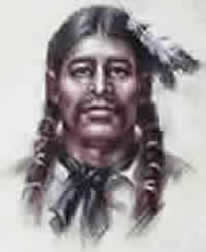 By the young age of about thirty, Black Hawk had been deeply traumatized by being present at both massacres of his kin at Battle Creek Canyon and Fort Utah as a prisoner of war. Add to his agony the murder of his father Sanpitch, his uncle Wakara, the death of Arapean, and a series of bloody confrontations leading up to the Bear River Massacre, when some four hundred of Black Hawk's shoshonee blood relations are brutally slaughtered by Mormon militia, Howard R. Driggs commented, "He could never understand why the white men had shot down his people. It put bitterness in his heart; and though he lived for some time with the white people, his mind was ever set on avenging the wrong."
By the young age of about thirty, Black Hawk had been deeply traumatized by being present at both massacres of his kin at Battle Creek Canyon and Fort Utah as a prisoner of war. Add to his agony the murder of his father Sanpitch, his uncle Wakara, the death of Arapean, and a series of bloody confrontations leading up to the Bear River Massacre, when some four hundred of Black Hawk's shoshonee blood relations are brutally slaughtered by Mormon militia, Howard R. Driggs commented, "He could never understand why the white men had shot down his people. It put bitterness in his heart; and though he lived for some time with the white people, his mind was ever set on avenging the wrong."
Meanwhile, the Transcontinental Rail Road was being completed at Promontory Point in Utah. The future of the Timpanogos Nation was now in the hands of Black Hawk and his uncle Chief Tabby, and together, they unleashed fury upon the Mormons they hadn't seen nor anticipated. Black Hawk assembled a thousand or more warriors from his communal Tribe with support from neighboring allies, the Colorado Utes, Lakota, Dine' and Apache. Over the course of just 15 months, they demonstrated incredible skill. They commanded a formidable counter-attack that effectively held back Mormon expansion into their most valued homeland along the Wasatch in central and southern Utah territory. Because Black Hawk understood Mormon economics, he managed to undermine their economy by flooding the market with stolen Mormon beef and horses, causing cattle markets to collapse and abandoning some 70 Mormon villages. Some say he nearly succeeded in driving the Mormons out of Utah. Skills he learned from Arapeen and Wakara.
Within a year, Black Hawk was mortally wounded at Gravely Ford while attempting to rescue a fallen warrior Shi-Nav-Egin (son of the sun), whites called him Whitehorse, as he always rode a white horse. Mormons said that Whitehorse had a "superstitious power over his warriors" suggesting he was perhaps possessed. In truth, Shi-Nav-Egin had survived a near-death experience, and having lived, his people believed he had a great mission yet to accomplish. And being a deeply spiritual person, Shi-Nav-Egin was highly respected within the Tribe. Eventually, and as a consequence of his heroic deed, Black Hawk would die from his wound. Complications from the wound to his stomach didn't heal properly and caused him much suffering. Black Hawk passed over Sept. 26, 1870 and was buried at Spring Lake the place of his birth.
Then in the year 1919 Black Hawk's grave was robbed by members of the Mormon Church. His mortal remains was first put on public display in the window of a hardware store in Spanish Fork for public amusement. Later his corpse was taken to Temple Square in downtown Salt Lake City and again put on public display for some 60 years. Seventy-seven years after Black Hawk's grave was robbed, Black Hawk was again reburied in the year 1996. It took an act of Congress, the help of National Forest Service archeologist Charmain Thompson, and the humanitarian efforts of a boy scout Shane Armstrong to find and rebury the remains of Black Hawk at Spring Lake.
Clearly Brigham Young started the war, and it was Black Hawk and his uncle Tabby who ended the war through peaceful means as you shall see. Account after account shows that Black Hawk and his entire family of respected leaders were against bloodshed from the beginning. Black Hawk convinced his Uncle it would be better to end the war peacefully. One only needs to look at our Timeline of The Black Hawk War to see that 1865-66 was the year the war was at its highest point following sixteen years of Mormon's ruthless cruelty resulting in thousands of Indian deaths and loss of land that continued seven years after 1865.
Notorious Mormon leader Brigham Young spent a staggering 1.5 million dollars in Church funds (equivalent to $30 million today) to "get rid of the Indians" and bills Congress for reimbursement. Brigham famously said, "It's cheaper to feed them than to fight them." A mere drop in the bucket though, when compared to the untold collateral losses suffered by the Native peoples of Utah. And who is there to reimburse them?
Professor Dr. Daniel McCool University of Utah summed it up succinctly: "We took from them almost all their land—the reservations are just a tiny remnant of traditional tribal homelands. We tried to take from them their hunting rights, their fishing rights, the timber on their land. We tried to take from them their water rights. We tried to take from them their culture, their religion, their identity, and perhaps most importantly, we tried to take from them their freedom. And what is so amazing about this whole story is that we failed. We failed after hundreds of years of trying to take everything from American Indians. We failed to do that. They're still here and there's survival; that great saga of survival is one of the great stories of all mankind."
"In those early days, it was at times imperative that harsh measures should be used. We had to do these things, or be run over by them," wrote John Lowry a Black Hawk War Veteran. "It was a question of supremacy between the white man and the Indian."
Brigham Young was quoted by the Denver Rocky Mountain Newspaper as saying, "You can get rid of more Indians with a sack of flour, than a keg of powder."
“Illa shared the story of her family getting a sack of Flour from the Mormons, when Old James Reed saw the flour he dumped some of it on the table and brushed his glove covered hand across it exposing the broken glass fragments hidden inside. She always warned against taking food from Mormons because of this,” Said Mary Murdock Meyer.
The consequence of the war resulted in an astonishing 90% decrease in Utah's Native population that was noted by Brigham Young and recorded in Indian agency reports, and government census records. Deaths from violence, starvation, and disease over a twenty three year period were in the thousands. "I do not suppose there is one in ten, perhaps not one in a hundred, now alive of those who were here when we came. Did we kill them? No, we fed them." ~ Brigham Young.
Antonga Black Hawk spent his last days on earth campaigning for peace. Black Hawk's life had come full circle from the time he bravely stood facing Capt. Scott at Battle Creek Canyon threw their only rifle at Scotts' feet, breaking the stock. Deathly ill from the gunshot wound he rode by horseback a hundred and eighty miles from Cedar City to Payson, visiting every Mormon village along the way. Black Hawk apologized for the pain and suffering he had caused and pleaded for an end to the bloodshed allowing his people to live in peace. It is easy to assume that Black Hawk would be filled with anger and hate and wanted revenge. "To some extent, that may be true," wrote Phillip B Gottfredson. "Indeed, he was feeling tremendous emotional pain as well. But he was taught his people come first, to love unconditionally and to forgive unconditionally. These are the core beliefs of the Timpanogos, and so it was that as a warrior, he chose to honor the sacred teachings of his ancestors. And that's what gets left out of Utah's history. So, if you must judge the Timpanogos, do so by their standards." Quotes from Phillip B Gottfredson, his book Black Hawk Mission of Peace.
There has never been a treaty in Utah ratified by congress, which had the legal right to make treaties with Native Americans. These were only non-binding agreements between Mormon colonists and the Timpanogos Nation.
The Myths of the Utah Black Hawk War
Gottfredson writes in his book, "There are many fallacious stories are told and retold, such as selling children into slavery, or children being buried alive with Timpanogos Chief Wakara when there is no credible evidence to support such an atrocious claim when living descendants of Wakara vigorously dispute these concocted stories. Saying it is a lie and contradicts the traditional core values of the Timpanogos Nation." Timpanogos leaders said, "Like our ancestor Wakara, we love our children and would never do such a thing, its white man who writes these stories, never asking our people their opinion." Which brought Gottfredson to make this point...
"While I struggled to make sense of the Mormons' convoluted view of history, and many books I read over and over again numerous times, it became obvious that the LDS Church has a monopoly on Utah's history, which makes me suspicious. It means they can manipulate any part of it to suit their own agenda. I would dare say damn-near all of it has been written by Mormon authors. Owing to their own intention, or failure to study Native culture in depth, virtually every account about Utah's indigenous peoples are biased and based on assumptions," he said.
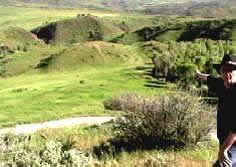
Site of the Little Diamond Battle
"Repeat a lie often enough, and it becomes the truth." This is how propagandist creates the illusion of truth. These histories get passed from generation to generation repeating the same mistakes and/or lies that earlier authors and historians have written, whether intentional or unintentional, still, they never ask the Native people for their side of the story. The time has come when Native Americans need to tell their stories and demand they are told accurately.
Forgotten are the thousands of Native American men, women, and innocent children who bled to death on the battlefields of Bear River, Pleasant Grove, Provo, Manti, or on the shores of Utah Lake. Or those who starved to death for want of food, run off their hunting grounds. Or those who died from measles and smallpox, or poisoned to death their sources of water contaminated with cyanide and strychnine, according to historian Will Bagley. Or those brutally murdered. 'Old Bishop', a beloved old Indian, was eviscerated, his stomach cavity filled with rocks and thrown in the river, accused of stealing a shirt off a clothesline.
After the war, we see the legacy of the Black Hawk War, ongoing cultural genocide as relentless attempts made to assimilate Native Americans into the white man's culture and take away their reservations. The Doctrine of Discovery, Dawes Allotment Act, the Reorganization Act, the Termination Act, the Self Determination Act, and the American Indian Religious Freedom Act. Then the boarding house schools, or the LDS Church Indian placement program are few of many examples of cultural genocide as native children are taken away, torn from the arms their families and relatives, their languages and traditions stripped away, to be assimilated, but not integrated, into the white man's world. Inspired by Manifest Destiny and Capt. Richard H. Pratt's racist slogan "Save the man, kill the Indian." If those children were among the fortunate, who survived after years and years of unimaginable brutality in all its many forms, living in complete isolation from their moms and dads, cousins, uncles, and grandparents, they returned home where they were now strangers among their own people. "One elderly Navajo woman showed me the scars in her mouth, she said happened when they washed her tender mouth out with lye soap for speaking her Native language," said Phillip.
There is much to learn from the Native Americans who have occupied Utah's landscape since time and memorial if only we would listen. The landscapes of Utah are as sacred today as when the Great Spirit created them. Burial sites, massacre sites, battlefields such as Battle Creek Canyon, Bear River, or Circleville where the cries of the wounded and dying can still be heard following the horrors that took place there. And for native peoples of Utah the Timpanogos, Paiute, and Goshute, respect for the dead is as important as respect for the elderly and reverence for life.
Quoting from Black Hawk's Mission of Peace, "As previously stated, since time and memorial, Honesty, Love, Courage, Truth, Wisdom, Humility, and Respect have consistently been the core beliefs of all traditional First Nation peoples I have had the honor to speak with. For Utah's Timpanogos there is no exception, they are and were deeply connected to the land of their ancestors. They were deeply connected and stood in awe of the beauty that surrounded them, the majestic Wasatch mountains, Utah Lake, Timpanogos Mountain, and Provo River. They were deeply connected to the plants in all their endless forms for food or medicinal uses. They were deeply connected to maintaining a harmonious relationship among themselves and their environment, the elk, deer, buffalo, and all living things. Even the rocks were sacred to them. They understood and respected these things as sacred gifts from their Creator. For the Timpanogos peoples, the war was never about riches or possessions, the land is their home, their mother, nourishing all her children, it is sacred, and being sacred belonged to everyone. They fought to protect the sacred, and their honor as a peaceful people.
Conclusion
Phillip summed it up perfectly when he wrote, "Perhaps the writers of Utah's sanitized history their intentions were never meant for Native Americans of Utah to read, who know better their history. Perhaps writers are too much in the habit of entertaining readers with flowery rhetoric and folklore. Sugar-coating Indian slavery. Understating the savage and barbarian behavior of Bill Hickman and Dr. James Blake for cutting off the heads of Indian corpses at Fort Utah and then selling them to make a few extra bucks, at the same time, making heroes of those who cut the throats of 26 innocent Paiutes at Circleville. Or William E. Croft looting Chief Black Hawk's grave and placing his remains on public display in the window of a hardware store my father remembered so well, and later at Temple Square for decades as amusement. Unrighteously placing all blame on the Native peoples of Utah, whose only crime was they being indigenous, is a mindset that has prevailed since the Mormons arrived a hundred and seventy-seven years ago."
Phillip also said in his book, "I am reminded of what great-grandfather Pete wrote in the preface of his book in 1919, Indian Depredations in Utah. "It is a half-century and more since the raids and assaults recorded in this book took place, most of the persons who took active parts in the same have responded to the last earthly call, and what information we get first handed must of necessity to be obtained now or never. I have often quarried; why should those conditions be forgotten, and why has so little interest been taken in keeping memoranda and records of events and conditions of those early and trying times."
"Why indeed, grandfather... why indeed..."
